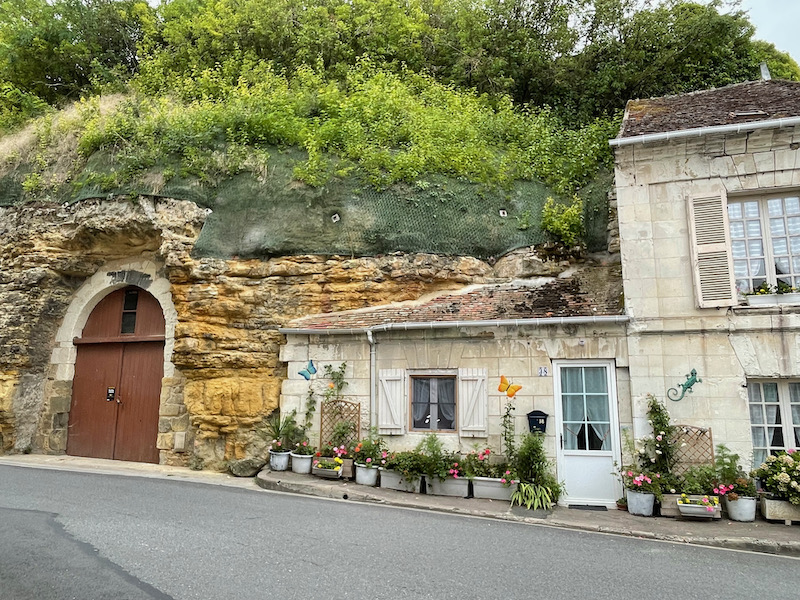Our Blog - Normandy 2023 - Montrésor, France
Montrésor is one of the Plus Beaux Villages de France, but it also has won another competition. In 2015, 22 villages competed on one of the French TV stations for the title of the The Favorite Village of the French". The charming village came in 2nd place (behind a town in Brittany)!!
Like many villages, the history of the village is associated to a castle. The first mention of the town dates back to 887, when the relics of Saint-Martin were transferred from here to Tours.
The name, if you split it up to "mon" and "trésor" means "my treasure". There is a legend to where this name came from. Young King Gontran, son of Clotaire I, fell asleep at the edge of a stream with his squire, who dreamed of a princess (whom he couldn't marry due to his poverty). The squire saw a small lizard rush into a crevice in the rock and then come out, all covered with gold. The king searched the rock, found an underground passage that led to a mountain of gold. The King built the Château de Montrésor on the hill and makes the squire the lord of the castle so that he could marry the princess.
St John the Baptist church dates back to 1522, when Lord Batarnay of Montrésor decided to build a church for his family to be buried. Unfortunately, he didn't live to see it finished as he died in 1523 and the church wasn't completed until 1541. The façade flanked by two oblique buttresses with double-doors. The tympanum above has 5 shell niches housing now-headless statues.
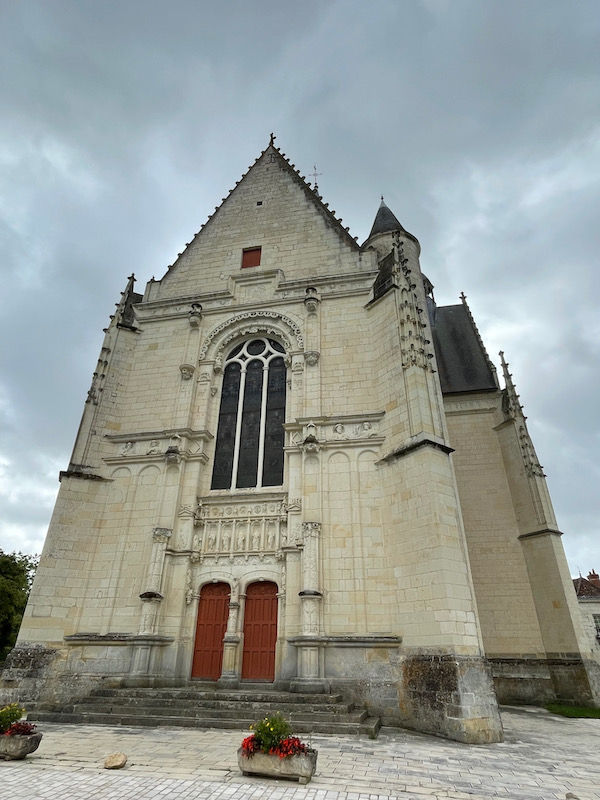
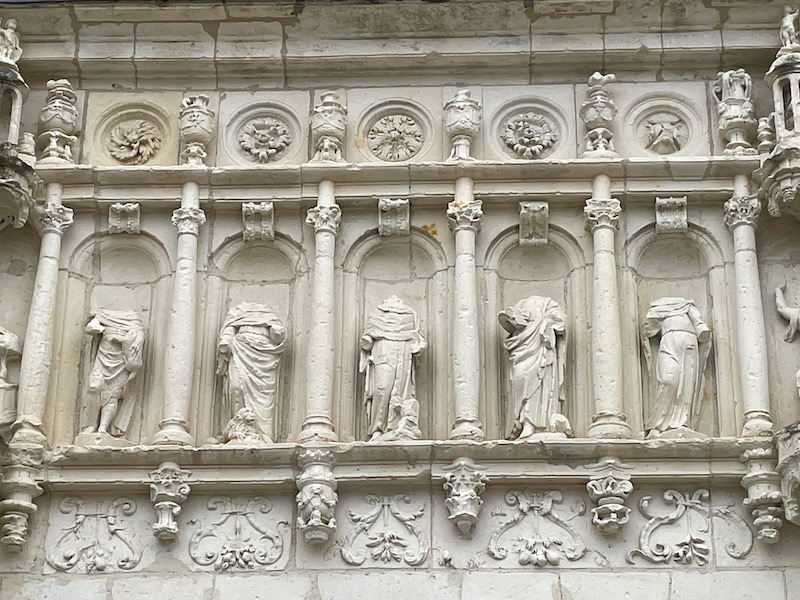
Just inside is the tomb of the Batarnay family, with recumbent figures sitting on a base surrounded by alabaster statuettes representing the 12 Apostles and the 4 Evangelists.
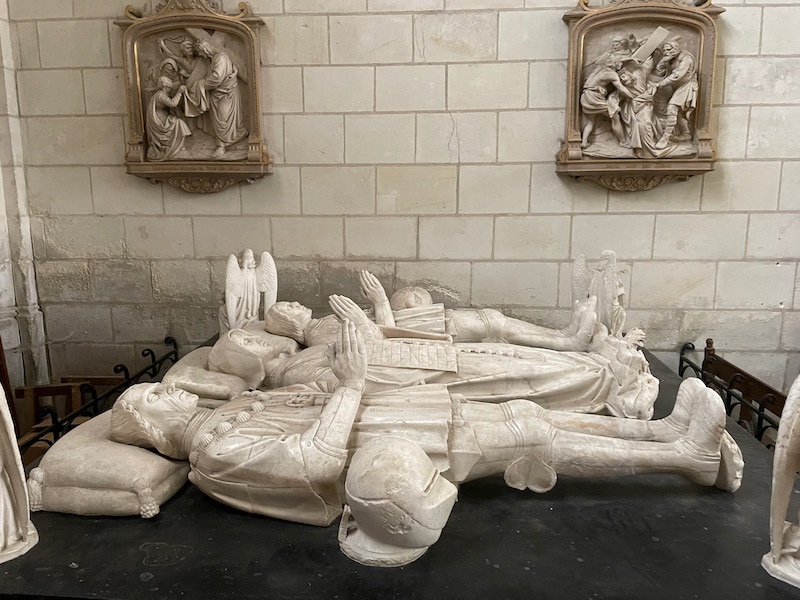
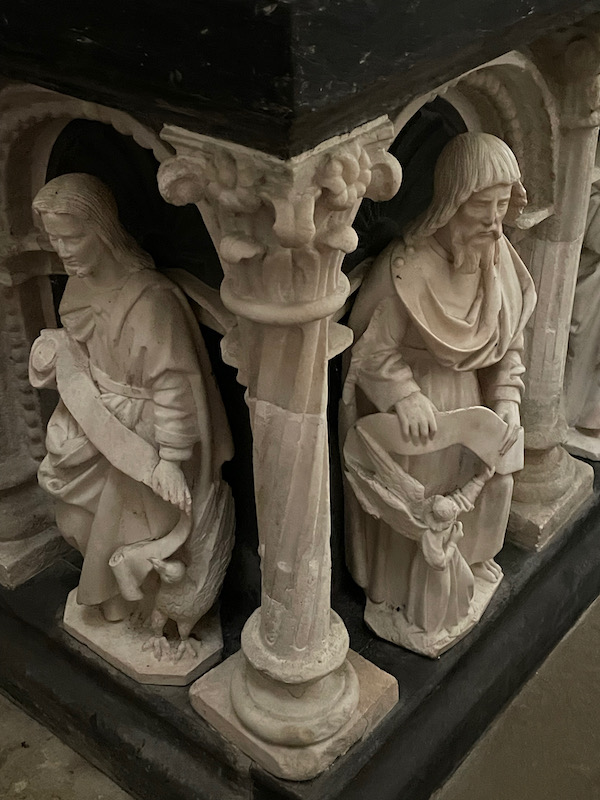
Here you can see the layout of the church with the high Gothic vaults. The main altar, out of carved alabaster, has a bas-relief of the last supper underneath.
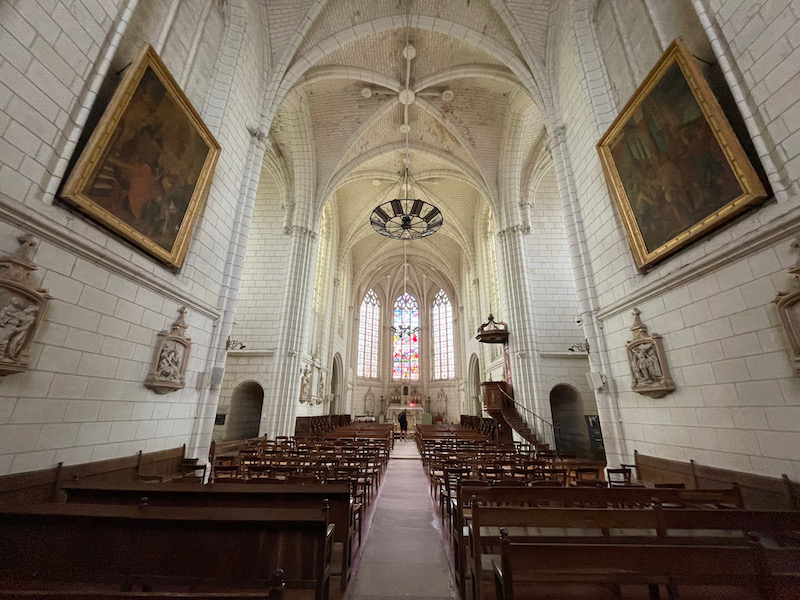
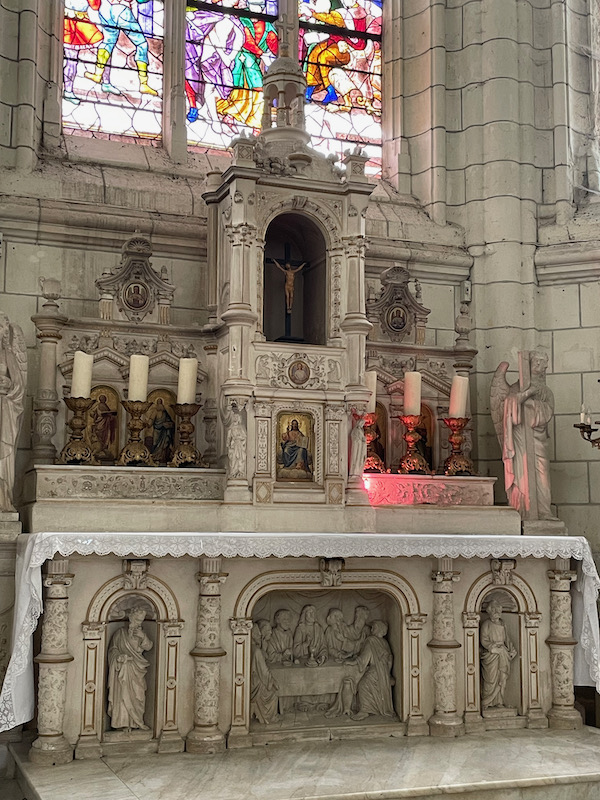
Of the original 18 stained-glass windows from the 16th century, only 2 have survived. The first is above the altar, which represents the Passion and Crucifixion. The other, showing 3 apostles, is over the main entrance.
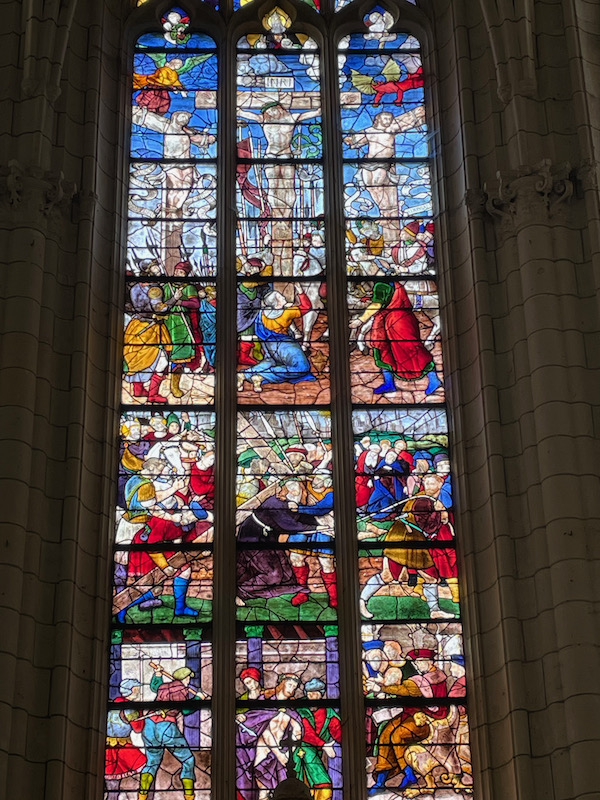
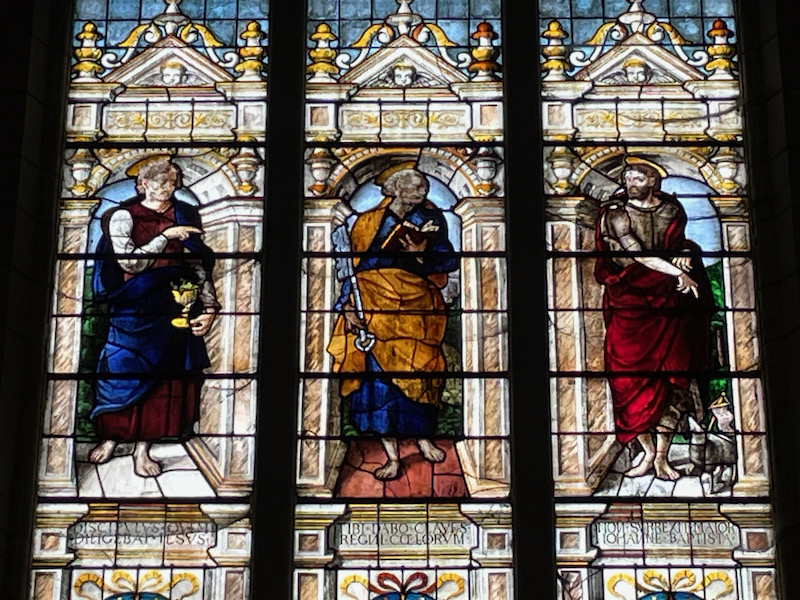
This was an interesting little chapel because the altar is painted wood.
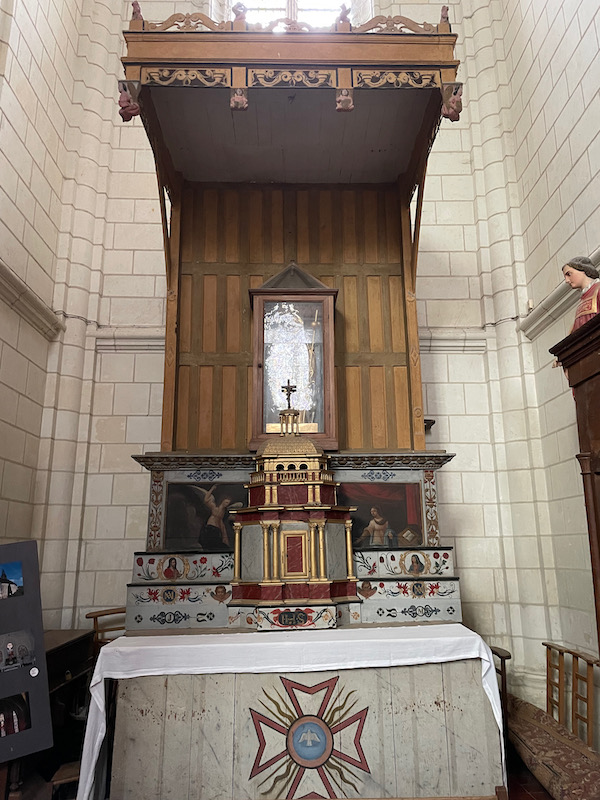
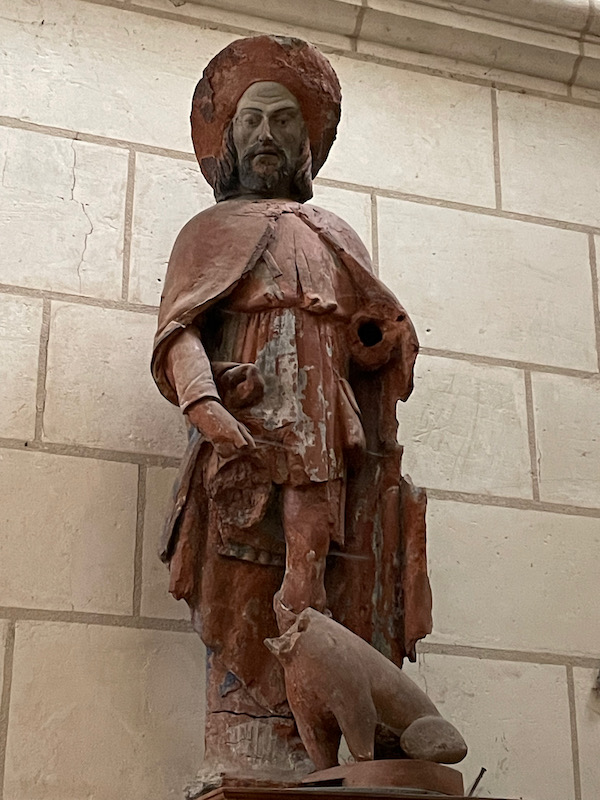
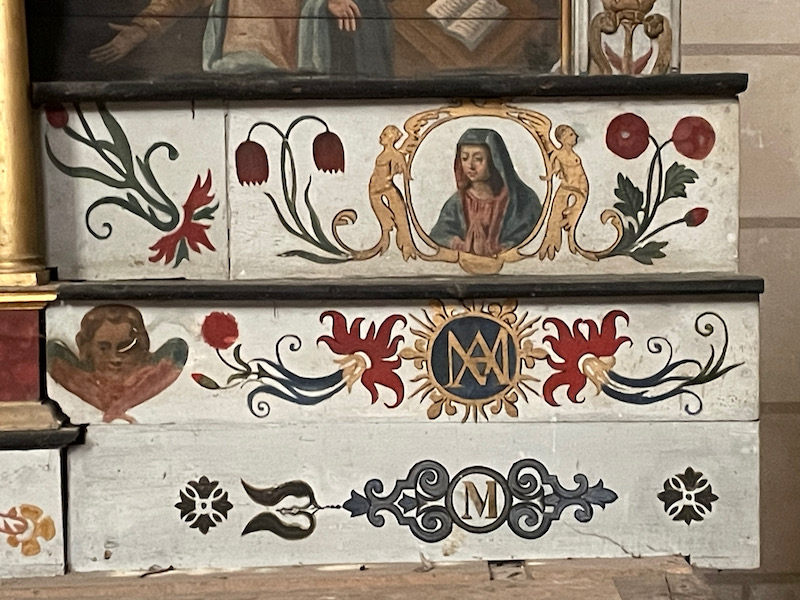
Within the village, there are a set of half-timbered houses that date to the 15th century during the reign of King Charles VII.
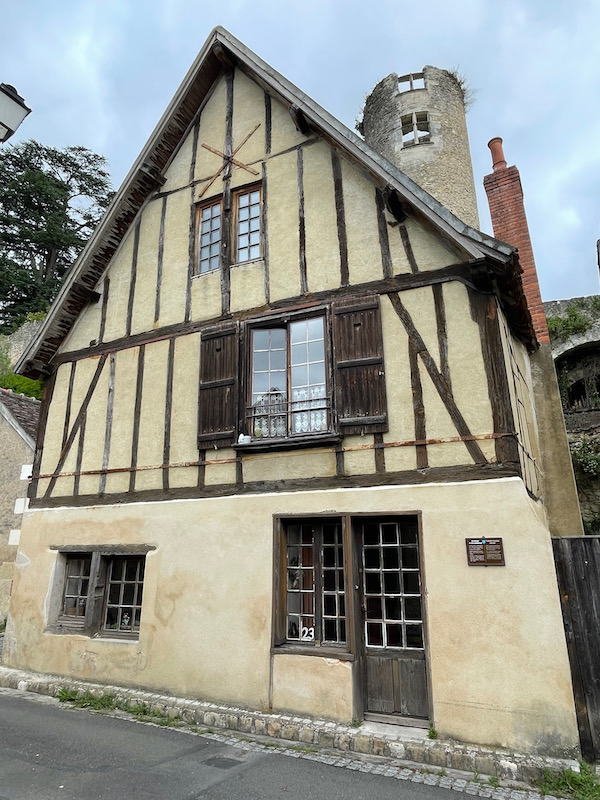
We can only give you a small peek at the Château as dogs weren't allowed in, even to the gardens, without a full ticket and then they couldn't go in the buildings. We decided not to go in this time and we put it on the list for another trip. The start of construction was in the 11th century with a stone fortress that then fell into the hands of Henry II of England in the 12th century. It was demolished in 1203 and rebuilt in 1393. An elegant Renaissance mansion was added in 1493. Like many things, the French Revolution marked the beginning of its decline and it ended up in a rather bad state. It was bought in 1849 by a rich Polish family (who were friends of emperor Napoleon III) and they completely restored the castle.
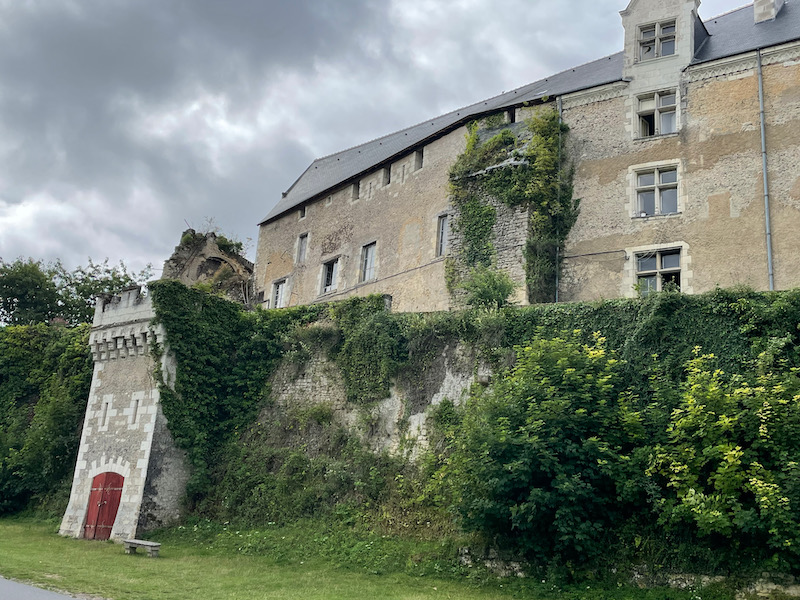
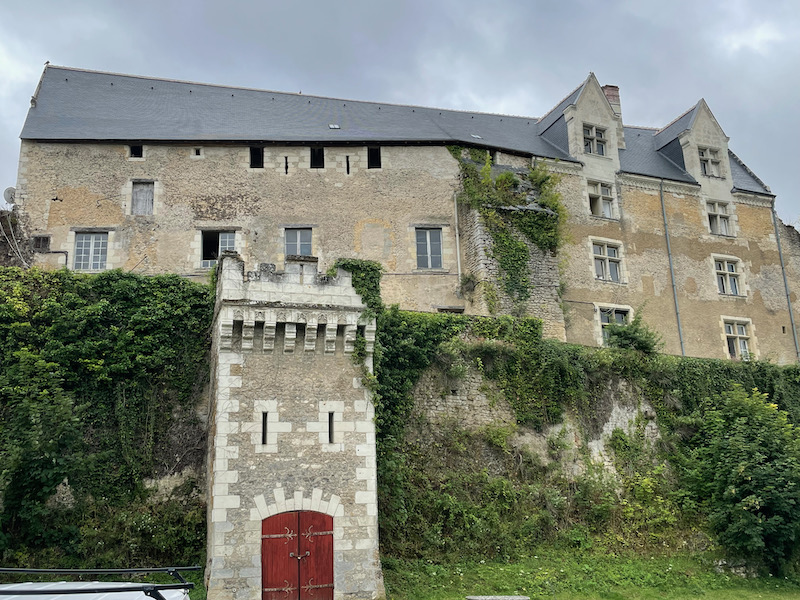
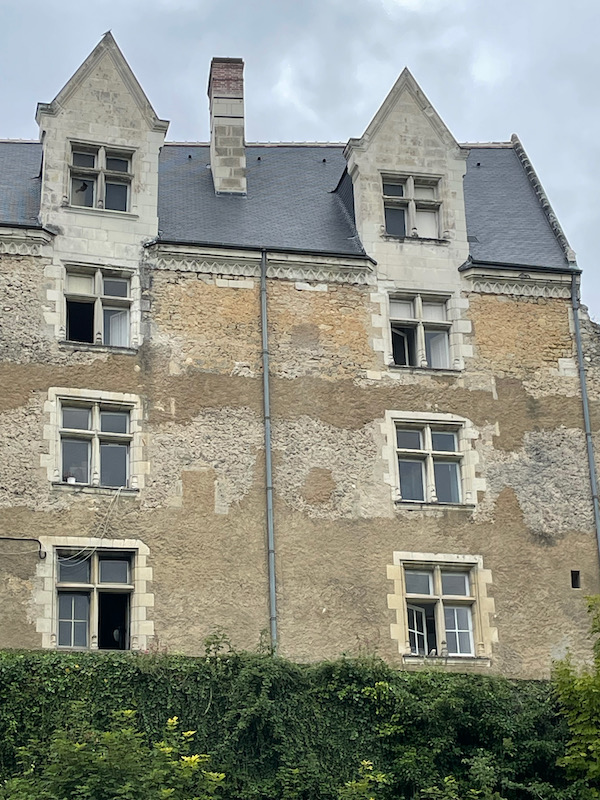
The gatehouse was built at the end of the 12th or beginning of the 13th century to protect the entrance to the castle. You can see the 2 circular towers with arrow slits and also the mullioned windows at the top that were added in the 14th century.
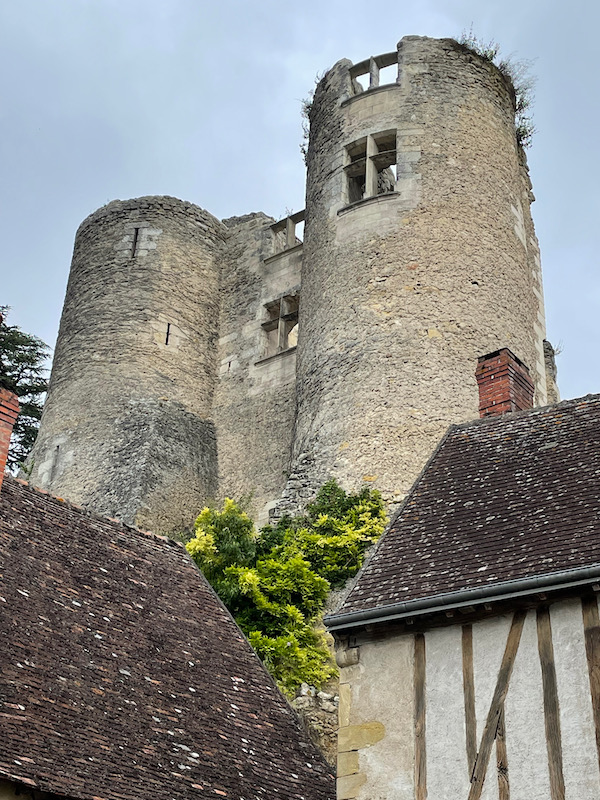
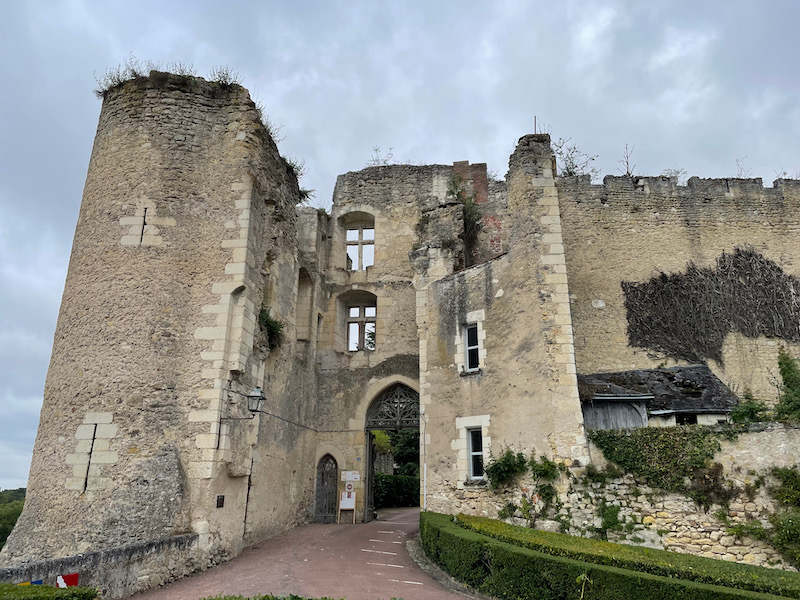
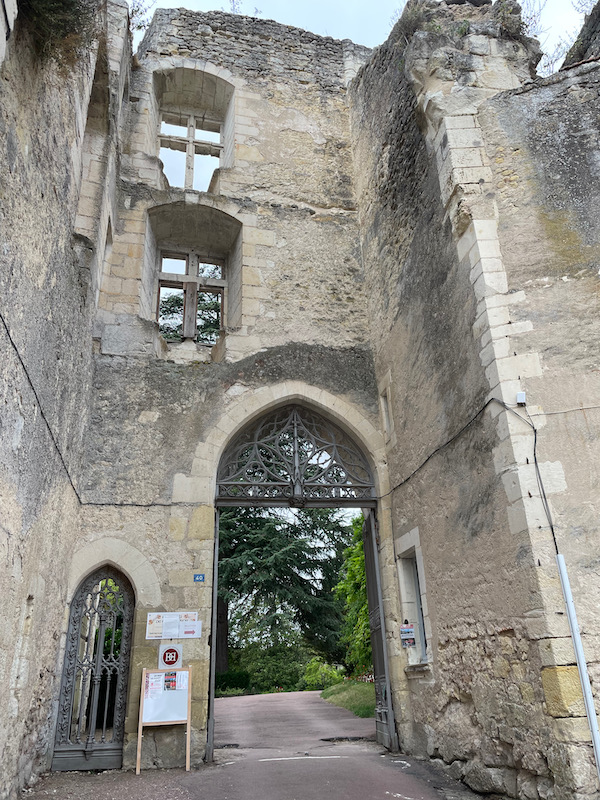
While many towns have a set of "halles" for a market, this one is not your average Halle. This one, the Halle des Cardeux, was a wool market (the name means Wool Carder Hall). It was built in 1699 and has a Mansard-style roof. The top floor, split into 12 rooms on a central corridor, was used to store sacks of grain. Today, it is used for various exhibitions, this one being art that is a combination of stained-glass and painting.
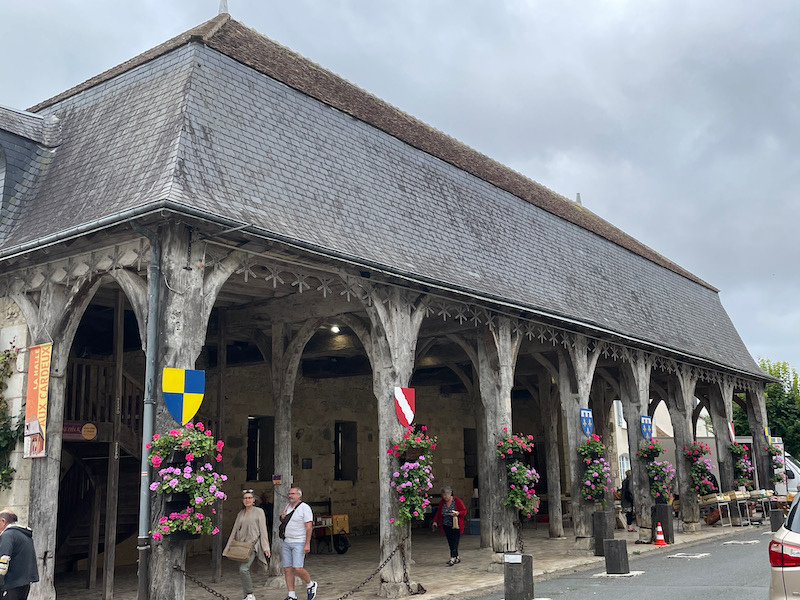
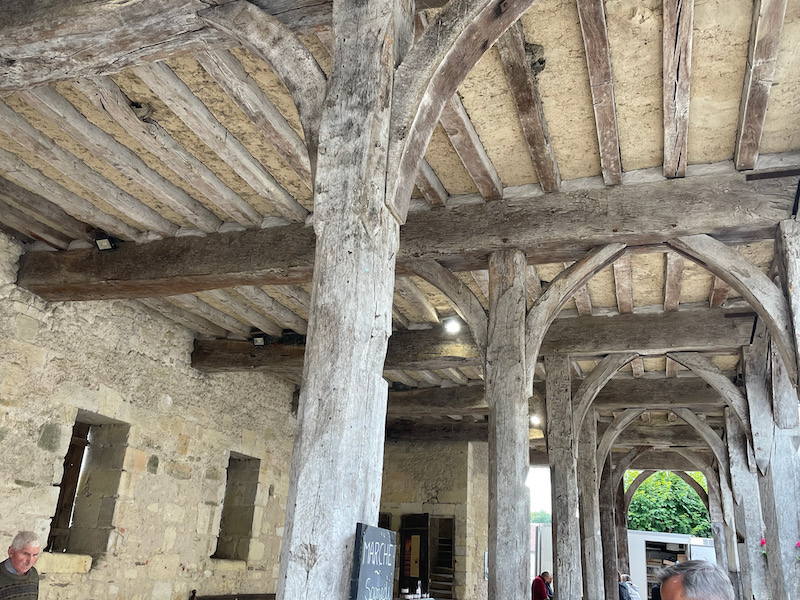
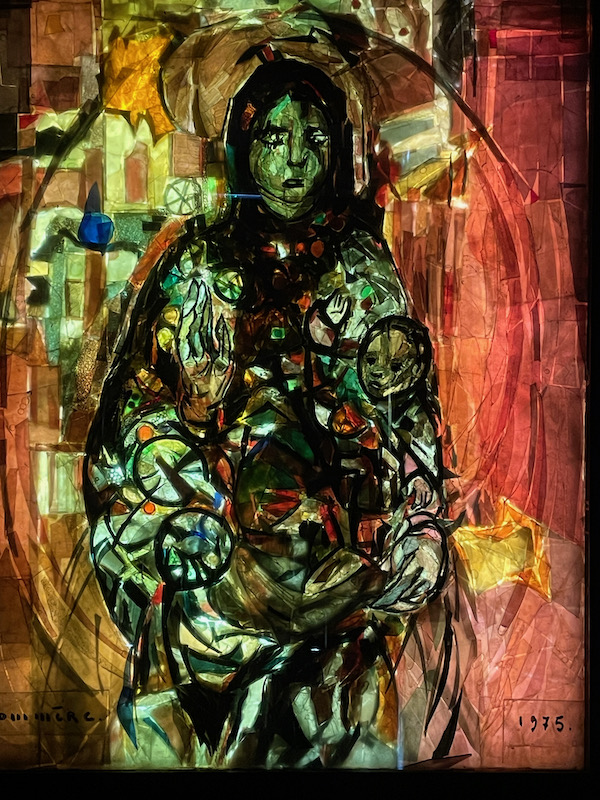
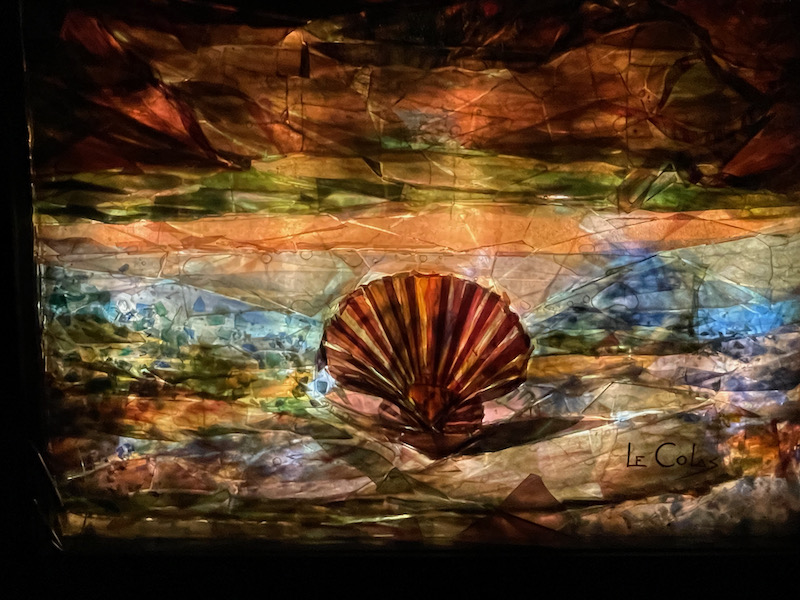

The Renaissance-style Chancellor's House was built in 1581 and today serves as the town hall. And while I think it is quite nice, the turret seems a bit out-of-place.
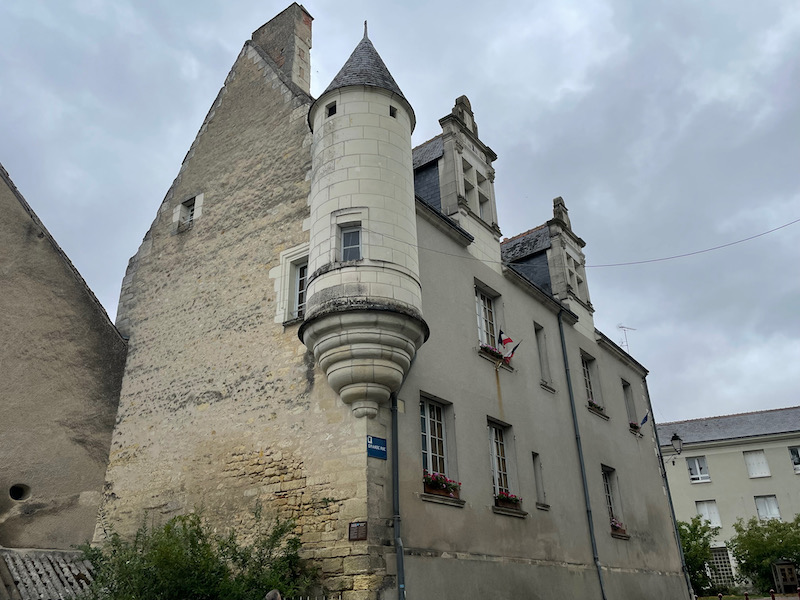
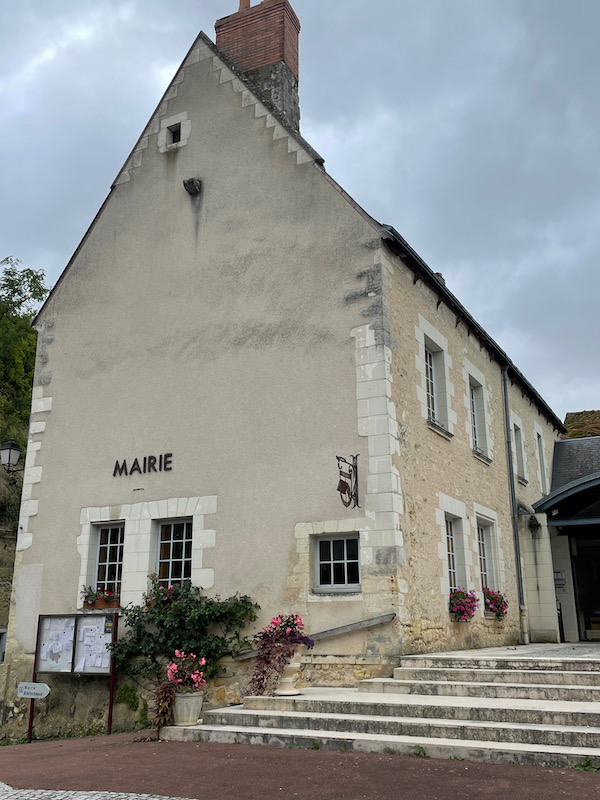
There are several cellars and garages that seem to be built into the rock that the castle sits on, and I wanted to show a picture of one of these troglodyte rooms. This one looks to be a garage for the house that buts up against the rock.
